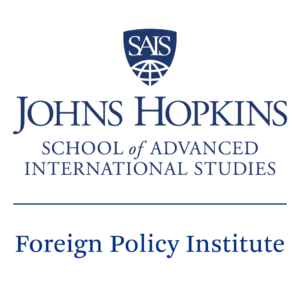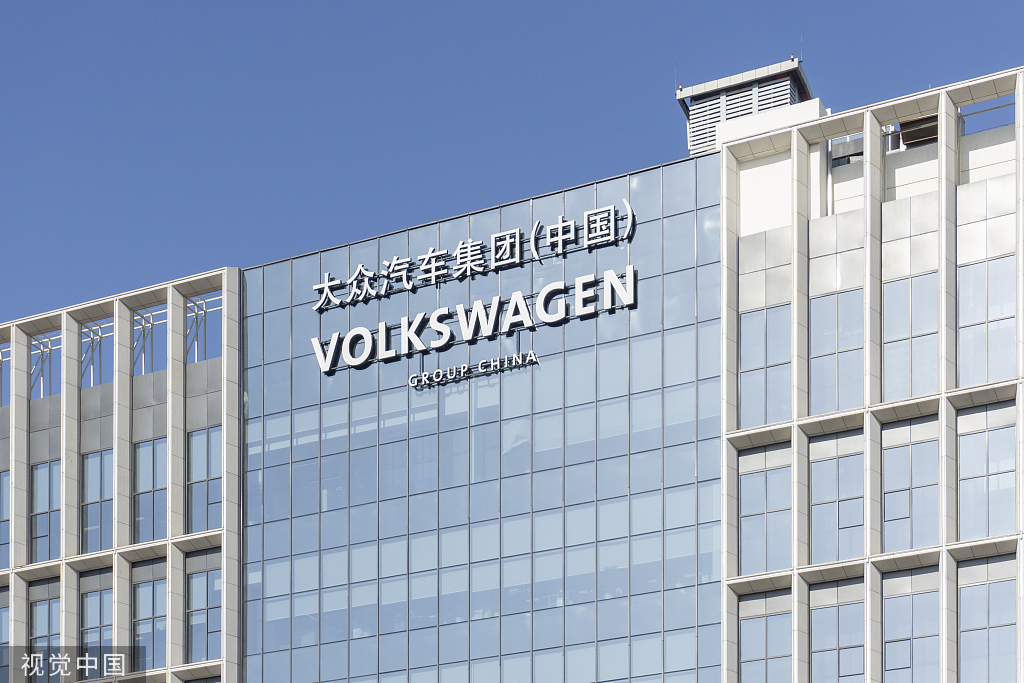
The Top Ten Cars Sold in China and Made in China
By Oliver Yan
Tesla Inc., the world’s leading electric car brand, announced this week that it will begin exporting its Model 3 cars made in China to Europe later this month. The announcement captured global headlines as it would mark the first time Tesla would export from its Shanghai-based facility – its first factory outside of the United States.
“We hope to serve global customers as a global factory,” Tesla’s Shanghai-based manufacturing director, Song Gang, said, according to a Bloomberg report. “The export of China-built Tesla models is a key step in the global layout.”
Of course, Tesla is not alone. Many of the world’s leading carmakers manufacture automobiles in China. Not only is China’s manufacturing prowess and infrastructure a boost, it also helps to be close to the largest markets for cars in the world. In the year 2019, Chinese buyers purchased 25.76 million cars, solidifying the country’s position as the world’s largest auto market.
China is also the largest supplier of automobiles worldwide, with both domestic and foreign brands made in China. While sales slowed in 2019 and certainly through 2020 due to the Covid-19 slowdown, China’s auto market potential remains immense.
Below are the Top 10 domestically made automobile brands sold in China. Of the top 5 brands, only one is Chinese-owned. The German company, Volkswagen, tops the list with more than 3 million units sold in 2019. It is headed for similar top billing in 2020, with 1.59 million vehicles sold in the first six months of 2020 according to Automotive News Europe.
Top 10 Automobile Brands Sold in China (domestically made)
| Model | 2019 | 2018 | Change | Share 2019 | |
| 1 | Volkswagen | 3,100,498 | 3,129,743 | -0,9% | 14,6% |
| 2 | Honda | 1,553,086 | 1,452,441 | 6,9% | 7,3% |
| 3 | Toyota | 1,409,198 | 1,295,002 | 8,8% | 6,6% |
| 4 | Geely | 1.220.832 | 1,387,258 | -12,0% | 5,7% |
| 5 | Nissan | 1,174,030 | 1,177,705 | -0,3% | 5,5% |
| 6 | Buick | 871,506 | 1,057,452 | -17,6% | 4,1% |
| 7 | Changan | 787,878 | 851,361 | -7,5% | 3,7% |
| 8 | Haval | 769,454 | 766,062 | 0,4% | 3,6% |
| 9 | Hyundai | 685,738 | 790,746 | -13,3% | 3,2% |
| 10 | Audi | 620,001 | 620,300 | 0,0% | 2,9% |
Source from: https://carsalesbase.com/china-car-sales-analysis-2019-brands
– Crossovers and SUVs now hold a record 43.6% share of the Chinese passenger car market .compared to 49.7% for sedans.
– The share of foreign brands increased for the third consecutive year to 61.2%, the highest it has been since 2015 and up 2.6 percentage points in 2018.
– Japanese brands hit their highest share in China since 2011 at 21.7% and both US brands and South-Korean brands their lowest shares in China since 2004 at 9% and 4.6% respectively.
– Volkswagen is still China’s bestselling brand, and because of its onslaught of crossover launches in the last two years, it manages to keep its sales virtually stable and this improves its market share to 14.6%.
– China had about 250 million cars by the end of June 2019, according to the Ministry of Public Security
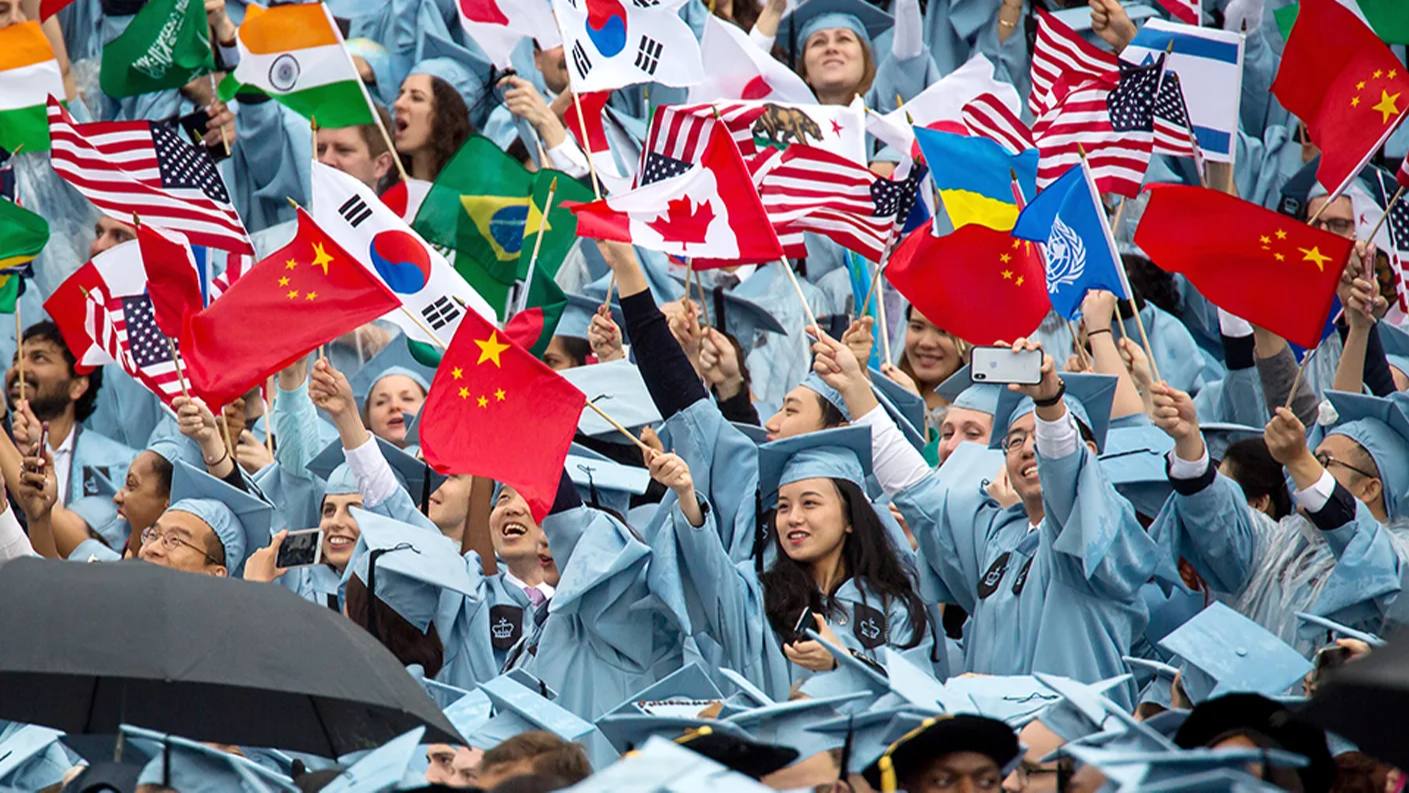
Chinese, International Students Vital to U.S Universities: Top Ten Lists
By Pinxian Du
More than one million international students live and study in college towns and universities across the United States. In the academic year 2018-19, Chinese students ranked number one, accounting for more than ⅓ of that total. Chinese students have held the top spot since the 2009/10 academic year. The U.S remains the number one higher education destination, accounting for more than one in five foreign students worldwide.
International students are attracted to the wide range of high-quality higher education institutions in the United States. Meanwhile, the universities and college towns prize international students for the diversity they bring, as well as the hard currency they pour into tuition and living expenses. All told, international students contributed $45 billion to the US economy in 2018-19, according to the U.S. Department of Commerce.
Perhaps most critically, international students created or supported nearly 460,000 jobs during the 2018/19 academic year, according to NAFSA, the association of international educators.
So, where do the other two-thirds of international students come from? And where are they studying? These three Top Ten lists offer a breakdown of the countries of origin of international students, and the states and the universities that host most of them.
| The top 10 countries of origin of international students in US (2018/19) | ||
| Name of Country | # of students from that country in 2018/19 | the amount of expenditure students spent in 2018/19 |
| China | 369,548 | $14,913,000,000 |
| India | 202,014 | $8,137,000,000 |
| South Korea | 52,250 | $2,191,000,000 |
| Saudi Arabia | 37,080 | $1,751,000,000 |
| Canada | 26,122 | $1,126,000,000 |
| Vietnam | 24,392 | $999,000,000 |
| Taiwan | 23,369 | $902,000,000 |
| Japan | 18,105 | $656,000,000 |
| Brazil | 16,059 | $558,000,000 |
| Mexico | 15,299 | $627,000,000 |
Source: IIE, Open Door Program Report
- In the academic year of 2018/19, the total number of international students in the United States increased by 0.05%, but the growth of new international student enrollment decreased by 0.9%.
- In the academic year 2018/19, 52% of the total amount of international students hailed from from China and India.
- In 2005, the late King Abdullah Bin Abdulaziz Al Saud of Saudi Arabia launched the King Abdullah Scholarship Program (KASP), and supported 90% (approximately 200,000) of Saudi students studying abroad, including full tuition, insurance, living expenses, and annual airfare. After the program, the group of Saudi Arabia students in US witnessed dramatic growth by increasing 128.7% in the following year (2006/07).
- Since 2001, the population of international students enrolled in higher education courses away from their home of origin has increased from 2.1 million to 5.3 million. However, the percentage of these students studying in the US has dropped from 28% to 21%.
- In the last 10 years, international student enrollment in the US saw extraordinary increases from developing and growing economies in the world, including:
- Vietnam, with a 90% increase in students between 2009 and 2019
- Brazil, with an 83% increase in students between 2009 and 2019
- Nigeria, with a 114% increase in students between 2009 and 2019
- Bangladesh, with a 205% increase in students between 2009 and 2019
| Top 10 states that have the most international students (2018/19) | ||
| Name of State | # of international students that state hosted | the economic benefits the state received |
| California | 161,693 | $6,818,109,371 |
| New York | 124,277 | $5,311,151,048 |
| Texas | 81,893 | $2,212,543,705 |
| Massachusetts | 71,098 | $3,213,960,406 |
| Illinois | 53,724 | $1,946,536,716 |
| Pennsylvania | 51,818 | $2,069,365,940 |
| Florida | 45,957 | $1,585,311,560 |
| Ohio | 37,314 | $1,277,034,932 |
| Michigan | 33,236 | $1,193,677,673 |
| Indiana | 29,083 | $985,429,644 |
Source: IIE, Open Door Program Report
- In 2019, education ranks 4th among US service sector exports.
- International students created or supported nearly 460,000 jobs during the 2018/19 school year. In California, the state which hosted the most international students in 2018/19, approximately 2,900 jobs directly supported as a result of international student enrollment and 5,800 jobs were indirectly supported.
- 1 out of 3 international students studies in CA, NY, of TX.
- Between 2016 and 2019, the impact on the US economy from declining international student enrollment was estimated to be -$11.8 billion, affecting nearly 65,000 jobs.
| Top 10 universities hosting the most international students (2018/19) | |||
| Name of university | Institution type | Location | # of international students enrolled |
| New York University | private | New York City, NY | 19,605 |
| University of Southern California | private | Los Angeles, CA | 16,340 |
| Northeastern University | private | Boston, MA | 16,075 |
| Columbia University | private | New York City, NY | 15,897 |
| University of Illinois, Urbana-Champaign | public | Urbana-Champaign, IL | 13,497 |
| Arizona State University | public | Tempe, AZ | 13,324 |
| University of California, Los Angeles | public | Los Angeles, CA | 11,942 |
| Purdue University | public | West Lafayette, IN | 10,943 |
| University of California, San Diego | public | San Diego, CA | 10,652 |
| Boston University | private | Boston, MA | 10,598 |
Source: IIE, Open Door Program Report
- Though there are more than 4,000 colleges and universities in the U.S. – depending on how those institutions are counted – 70% of international students tend to study at only about 200 schools; those students are primarily concentrated in Texas, California and New York.
- Foreign students who made up 12% of the total student population contributed nearly 30% of total tuition revenue at public universities.
- International students pay nearly twice as much in tuition in the US as native students.
- Open Doors 2019 reports that about 62 percent of all international students receive the majority of their funds from sources outside of the United States, including personal and family sources as well as assistance from their home country governments or universities.
- The expenditure of one international student is 53% directly on higher education, 19% on accommodation, 12% on dining, and 10% on retail.
- International students at community colleges contributed $2.6 billion to the U.S. economy and supported more than 13,970 jobs during the 2018/19 academic year. These economic benefits represent a 3% decrease in dollars contributed, and a 7.8% decrease in jobs created or supported when compared to the previous year.
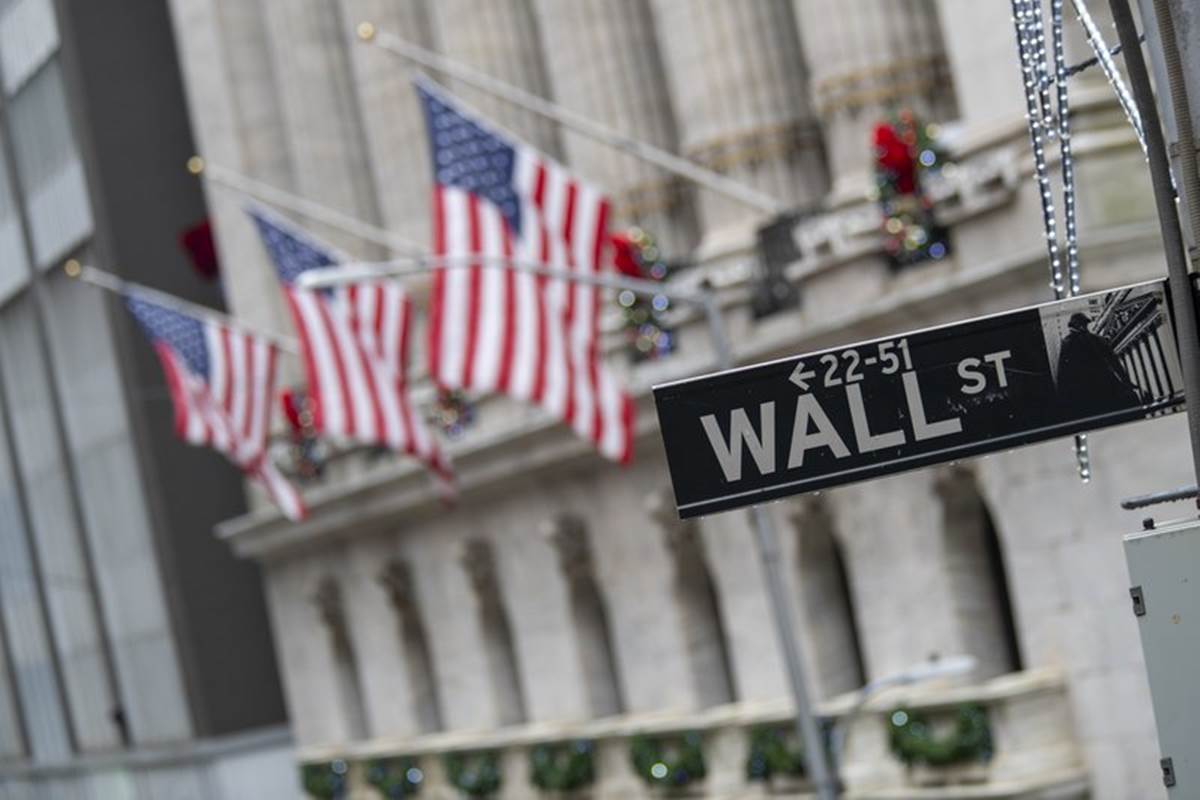
Top Ten US State Economies vs. Global Economies
By Weiran Yuan
A key feature of the global economy over the last four decades has been the rise of emerging markets, most notably China. The rise of the emerging world has rebalanced the global economic order. Still, despite the rise of new economic powers and a more broadly balanced global economic pie, one thing remains true: The U.S. economy remains a powerful force in the world economy. One way to look at it is by considering the GDP of several U.S. states in comparison to national economies.
When you look at the top ten US economies (by GDP size), you sense the power of the U.S economy. Consider California, for example. If it were a stand-alone country, it would have a GDP that would rank it among G-7 economies. Its economy is roughly the same size as that of the United Kingdom. Or consider Texas, the second-largest economy. It shares something in common with Brazil: the largest economy in South America with rich natural resources. The list goes on.
Below you will see the Top 10 US state economies, expressed in nominal GDP, with their rough equivalent counterpart country.
| GDP in USD | Country/Area equivalent economy (in 2019) | ||
| 1 | California | 2.78 Trillion | United Kingdom (2.82 tn) |
| 2 | Texas | 1.80 Trillion | Brazil (1.84 tn) |
| 3 | New York | 1.44 Trillion | Spain (1.40 tn) |
| 4 | Florida | 947.41 Billion | Netherlands (902 bn) |
| 5 | Illinois | 775.85 Billion | Saudi Arabia (779 bn) |
| 6 | Pennsylvania | 723.05 Billion | Switzerland (715 bn) |
| 7 | Ohio | 610.49 Billion | Taiwan (586 bn) |
| 8 | New Jersey | 558.65 Billion | Poland (565 bn) |
| 9 | Georgia | 537.27 Billion | Thailand (529 bn) |
| 10 | Washington | 530.82 Billion | Thailand (529 bn) |

Top Ten Most Populous Cities – Then, Now, and the Future
By Luming Zhao
Human civilization has been defined by the rise of cities. In fact, the word derives from the Latin term civitas, or “city.”
Throughout history, the great cities of the world have driven economic, political, cultural, and social change. Simply put, our world would not be the same without the rise of cities.
Today, cities account for about 80% of global GDP, and account for some 55% of the world’s population. By the year 2050, according to the UN, more than two-thirds of the world will live in cities.
Cities, like nations, can benefit from population size. When leveraged well, sizable cities can become centers of trade and innovation. On the flip side, populous cities pose immense challenges to governments to provide infrastructure, healthcare, education and other needs.
These Three Top Ten lists of the world’s most populous cities from three different eras (2020, 2035 forecast, and 1950) offer a snapshot of the changing dynamics of our world.
The Top Ten Most Populous Cities – 2020
-
- Tokyo, Japan 37.4 Million
- Delhi, India 29.3 Million
- Shanghai, China 26.3 Million
- Sao Paulo, Brazil 21.8 Million
- Mexico City, Mexico 21.6 Million
- Cairo, Egypt 20.4 Million
- Dhaka, Bangladesh 20.2 Million
- Mumbai, India 20.1 Million
- Beijing, China 20 Million
- Osaka, Japan 19.2 Million
The Top Ten Most Populous Cities – 2035 (Forecast)
-
- Jakarta, Indonesia 38 Million
- Tokyo, Japan 37.8 Million
- Chongqing, China 32.2 Million
- Dhaka, Bangladesh 31.2 Million
- Shanghai, China 25.3 Million
- Karachi, Pakistan 24.8 Million
- Kinshasa, DRC 24.7 Million
- Lagos, Nigeria 24.2 Million
- Mexico City, Mexico 23.5 Million
- Mumbai, India 23.1 Million
The Top Ten Most Populous Cities – 1950
-
- New York, USA 12.3 Million
- Tokyo, Japan 11.2 Million
- London, UK 8.3 Million
- Osaka, Japan 7 Million
- Paris, France 6.2 Million
- Moscow, SU 5.3 Million
- Buenos Aires, Argentina 5.1 Million
- Chicago, USA 4.9 Million
- Kolkata, India – 4.6 Million
- Shanghai, China – 4.2 Million
Sources: United Nations, Oxford Economics.

China’s Undiplomacy: Why the ‘Wolf Warriors’ Fail to Convince
Guest Comment – By Oliver Stelling
In September, China’s Foreign Minister embarked on a goodwill tour of Europe. Expectations were high that he would manage to repair strained ties with the bloc. It wasn’t meant to be. His charm offensive fell flat.
Wang made no concessions on Hong Kong or Xinjiang. In Oslo, he cast new doubt on the virus’ origin in China and challenged Norway not to allow the Nobel Committee to award Hong Kong’s protesters. And while in Germany, he warned the Czech Republic that there was a ‘heavy price to pay’ for dispatching a delegation to Taiwan. That ‘heavy price to pay’ has become a common line by Chinese diplomats, never failing to invoke public anger in their host countries and beyond.
Wang’s choice of words was a deliberate show of forcefulness aimed at his domestic audience. As long as China was a rising but still developing economy, such internal messaging bore little consequence for international relations. Now the bar is set higher. China has emerged as a knowledge economy, an incubator for scientific discoveries and technological advances that shape the modern world.
Not since the Cultural Revolution has China’s international image been lower across Europe, Canada, Australia and parts of Asia. Relations with the U.S. have seen the most dramatic decline due to President Trump’s erratic policies, the trade war and hostile rhetoric. However, Beijing’s latest geopolitical moves would have escalated tensions with any U.S. administration.
It remains unclear how all this could fall within the range of acceptable diplomatic outcomes. Even so, the Chinese Communist Party (CCP) keeps picking fights and lashes out against ‘the West’ when faced with pushback. Never mind that most flashpoints are right at China’s doorstep.
The contrast of Beijing’s successful containment of the coronavirus vis-à-vis America’s abject failure in dealing with Covid and multiple other domestic crises gives China an open goal and a great story to tell. It was a triumph that should have dominated the news for months. Instead Beijing’s diplomats chose to parade Trump’s debacles as proof of the waning authority of the West at large.
In some ironic way, the wolf warrior idioms resemble Trumpian projection – the claim of victimhood. Nothing suggests that they are readying to adopt a different style, one that outtrumps Trump and aligns diplomacy with the principles of the Asian Century China helped to create. The tone has become ever more assertive and messaging across internal and external communications remains incoherent.
Chances to convince foreign audiences are slim as the wolf warriors seem unable or unwilling to employ a foreign-targeted language. This has not gone unnoticed by Chinese thinkers. Efforts are underway to craft a more audience-centric, positive and cohesive narrative.
The stated objective of China’s Belt and Road Initiative’s (BRI) is to create a ‘Community of Shared Destiny’. While the BRI’s short term prospects are somewhat uncertain, its primary goal, first expressed by former CCP general secretary Hu Jintao, has become a staple of CCP messaging. It sounds visionary, benign and perfectly in line with China’s advocacy of multilateralism. It certainly has more appeal than Trump’s ‘America First’. All it needs now is content, validation and a clear roadmap.
The Institute for a Community with Shared Future at Communication University of China is working to fill that vacuum. If it manages to develop a cohesive narrative supported by policies that are acceptable to the world, a path to more global collaboration has been staked. What it must not become is a tool to more efficiently spread state propaganda.
There is no issue with China aiming to become the custodian and driver behind that shared future. But it does not own the future. Not even if one buys into Chinese exceptionalism. The often repeated line ‘China’s got five thousand years of history’ captures how China views the past and future in terms of centuries, not decades. The real-life implication is that China deserves special consideration, patience and extra respect.
“Somehow we are supposed to believe that China has more history than other places”, writes John Ross in a post for Camphorpress. His core point is that civilizations in other parts of the world precede China and that writing systems in Egypt and Mesopotamia predate Chinese writing by a thousand years. “The world’s first city, Uruk, in modern-day Iraq, dates back seven thousand years. China was first unified in 221 BC, a century after Alexander the Great had created the Hellenistic Empire, and just a few centuries before the zenith of the Roman Empire.”
Chinese history is without doubt long and fascinating. There’s no need to spin it unless the point is to disqualify critics for their alleged lack of knowledge about China. China has a rich history and culture and there is always more to learn, but that works both ways. In any case, this tactic inflicts less self-damage than outright discrediting entire countries.
When Hu Xijin, editor of China’s Global Times compared Australia to ‘gum stuck to the bottom of China’s shoe’, the global backlash was intense. Analysts, academics and global media including The Guardian, New York Times, Asia Times and the BBC concluded that China was denying other countries the respect it demands for itself.
While internal hawks appear to be winning, the wolf warriors seem to overlook that being discredited by Chinese propaganda outlets often serves to bump up one’s credibility. The same applies to China’s ‘Twitter diplomacy’.
A few years ago Beijing began to encourage diplomats, academics and media elites to use Twitter to engage a broader global audience and retell the China Story. A risky move that exposed many new users’ struggle to master an uncensored platform created to foster dialogue and open debate.
China’s embassy in Sri Lanka underscored that when complaining on Twitter, after its account was temporarily blocked, that it had been denied “freedom of expression”. And just recently, China’s Ambassador to the U.K. tweeted: “If you choose to be not our friend or partner you will have to bear the consequences.”
The list of undiplomatic tweets is long, including one diplomat’s retweets of a Texas woman’s random shower thoughts about the origin of Covid19, and conspiracy theories propagated by globalresearch.ca. – a fringe site that also claims that Osama Bin Laden was not killed by a US Navy SEAL team in 2011 but died in 2001.
The wolf warriors do not always seem to know whose voices matter and which ones are discredited. And if they do but don’t care, the signal this sends is the same: truth, reputation and trustworthiness of sources don’t matter.
While embracing a markedly different tone and style, their narrative is shaped by tropes and clichés from a bygone era. Beijing may think little of ‘intangibles’ such as perceptions. Who needs soft power when you have already proven to possess the vision and ambition to become a global leader in science, technology and more? But that seems out of touch with the shared destiny.
This cannot be in China’s interest and certainly not in the world’s either. If Beijing feels misunderstood and wrongly accused, it must ask itself: ‘Why do they mistrust us so much?’
According to Pew Research’s latest survey, a median of 34% across the 13 countries surveyed believe the U.S. is the world’s leading economic power, while 48% say the same of China. That shows that economically China is on the right trajectory. What remains is the building of trust which depends on a more audience-centric language.
There is a precedent for successfully engaging the world on ‘their terms’ and reaping the benefits – the run up to the 2008 Beijing Olympics. China’s image had never been better. A course correction today would send just the right message ahead of the Communist Party’s upcoming centennial.
The writer is a senior communications specialist, with a particular focus on emerging markets across Asia and the Middle East.

Has the Alibaba Train Left the Station?
Is it time to buy Alibaba?
That’s the question posed by the popular investment newsletter, the Motley Fool, published in Yahoo Finance. The author of the piece, Anders Bylund, notes that the NYSE-listed Chinese e-commerce giant “is on a roll” and “the company is crushing Wall Street’s expectations in the COVID-19 lockdown era,” with share prices roaring 64% higher over the last 52 weeks.
So, Bylund asks: “Is it too late to jump aboard Alibaba’s skyrocketing bandwagon or is the stock still a buy?”
A few choice cuts from the piece below:
Alibaba’s sales rose 30% year over year to $21.8 billion in August’s first-quarter report. Earnings increased by 15% to $2.10 per share. The results breezed by Wall Street’s consensus estimates, which had pointed to earnings near $1.98 per share on approximately $21.3 billion in top-line revenue.
On the earnings call, CEO Daniel Zhang noted that the COVID-19 pandemic accelerated Alibaba’s business in many ways. Consumers are doing more shopping online and enterprises rely on cloud computing resources like the Alibaba Cloud platform to an unprecedented degree…
Alibaba is expanding its operations outside Chinese borders, including a deep interest in starting direct e-commerce operations in the United States. Political tension between Washington and Beijing is making that ambition difficult to pursue right now but investors should keep this expansionist agenda in mind for the long haul.
In the meantime, there’s a real risk that the Trump administration might take action to obstruct Alibaba’s business on American soil. According to a recent report in the Chinese newspaper Global Times, Chinese analysts worry that the U.S. government might block Alibaba’s semiconductor development efforts and cloud computing services ahead of the election in November…
Buying Alibaba shares is a direct bet on the Chinese economy, in the long run, magnified through the lens of booming e-commerce and cloud computing operations. The stock is also fairly affordable, trading at just 30 times trailing earnings and 25 times forward estimates. That adds up to a solid buy. Some investors might prefer Pinduoduo or JD, but Alibaba offers the best balance between risk and long-term rewards, in my opinion.
For the full piece, go here
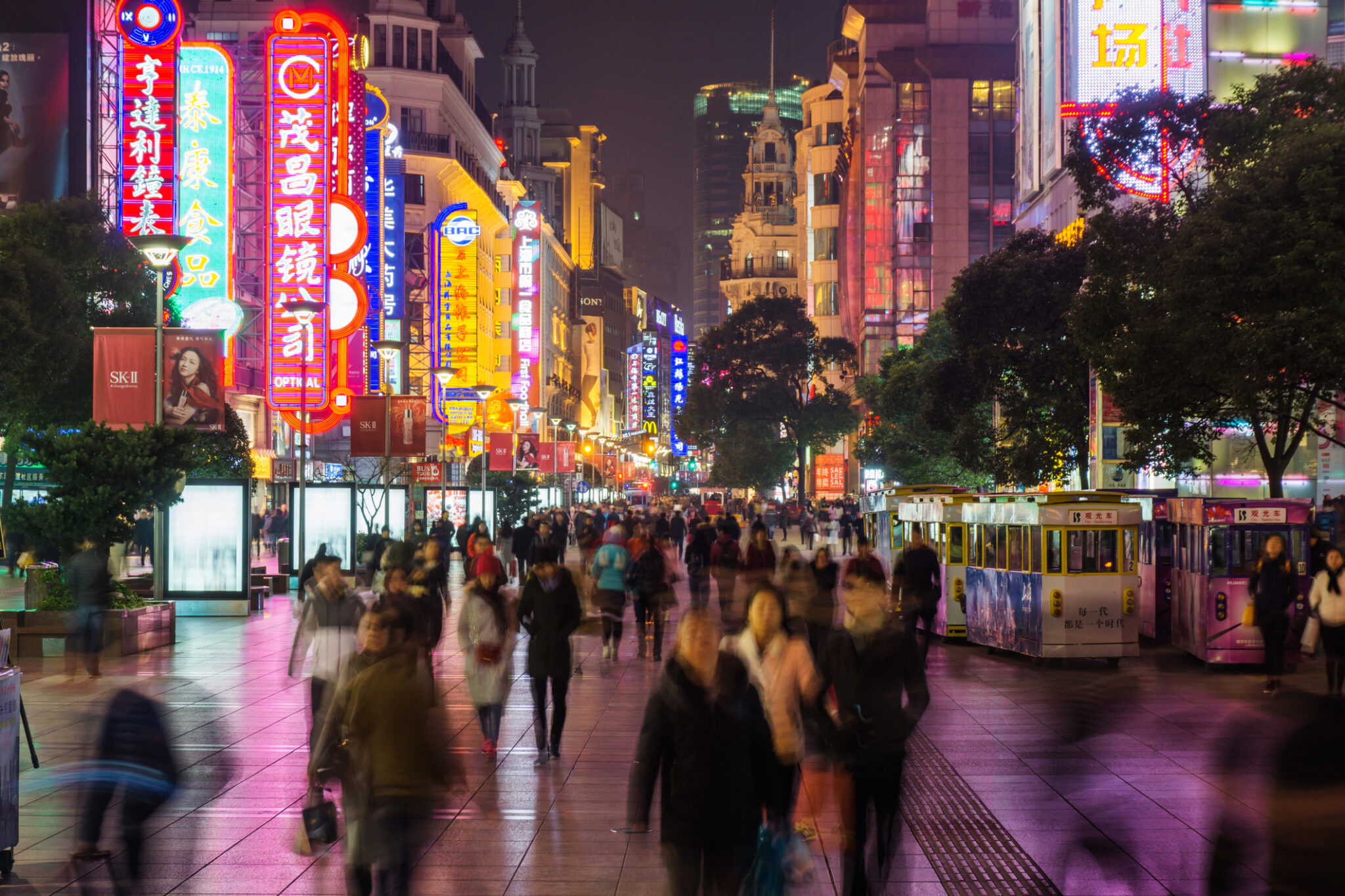
The Top Ten Largest Chinese Companies
The Fortune magazine Global 500 annual list of the world’s largest companies by revenue has always been a high-profile, headline-grabbing snapshot of global business. This year, however, it’s also a snapshot of our emerging geo-economic order.
For the first time in the three decade history of the list, US companies do not comprise the largest number on the list. That distinction goes to China.
Clifton Leaf, Editor-in-Chief, of Fortune magazine put that into perspective when he wrote, “there were precisely zero Global 500 companies based in mainland China in 1990 when we began our survey. Today there are more giant for-profit enterprises there than anywhere else on earth.” Three of the top five largest companies in the world are Chinese — Sinopec Group, State Grid, and China National Petroleum.
The Fortune 500 Global list includes state-owned enterprises and ranks companies by total revenue. Thus, those tech-heavy companies that top market capitalization lists are not as prominent in the Global 500. In compiling the list, the editors included Hong Kong as part of the mainland China list, but did not include Taiwan.
At final tally, China held 124 spots in the Global 500, while the U.S held 121 spots. In the year 2002, there were 197 U.S-based companies on the list. In 2003, there were only 11 China-based companies in the Fortune Global 500.
It has been a remarkable rise for Chinese enterprises. Here are the Top Ten China-based companies in the Global 500, with their China ranking on the left, total revenues following and their global ranking in parentheses.
| Company/China Ranking | Revenues in $ (Global Rank) |
| 1. Sinopec Group | $407 Billion (2) |
| 2. State Grid | $384 Billion (3) |
| 3. China National Petroleum Corp | $379 Billion (4) |
| 4. China State Construction Engineering | $206 Billion (18) |
| 5. Ping An Insurance | $184 Billion (21) |
| 6. Industrial & Commercial Bank | $177 Billion (24) |
| 7. China Construction Bank | $159 Billion (30) |
| 8. Agricultural Bank of China | $147 Billion (35) |
| 9. Bank of China | $135 Billion (43) |
| 10. China Life Insurance | $131 Billion (45) |
Some other interesting findings from the Fortune Global 500
- The world’s 500 largest companies generated $33.3 trillion in revenues and $2.1 trillion in profits in 2019. This year’s Fortune Global 500 companies employ 69.9 million people worldwide and are represented by 32 countries.
- WalMart topped the global list again, with $524 billion in revenues
- Five Chinese companies entered the Global 500 for the first time – Shanghai Construction Group, Shenzhen Investment Holdings, Shenghong Holding Group, Shandong Iron and Steel Group, and Shanghai Pharmaceuticals Holding
To explore the Fortune 500 Global list, complete with some excellent interactive maps, go here

US Stocks Roar to New Highs Despite Pandemic
What Pandemic?
While global economies, most businesses, and entire industries are reeling from the multiple blows delivered by the Covid-19 pandemic, the U.S stock market continues roaring to new heights.The S&P 500, the bellwether index that measures the performance of 500 companies listed on U.S exchanges, continues to shatter records. Consider this:
- The S&P 500 hit a new record of 3,508 on Friday
- The index has seen its best August returns in 36 years
- The index is up for five straight months and has hit a record 7 times
- The index is up nearly 60% from its March Covid-19 induced low, and is up nearly 9% on the year
- The tech-heavy Nasdaq index of stocks is up more than 36% on the year
One prominent analyst even suggests that the S&P could hit 3,900 soon, another new record.
So, what gives?
In a sense, the Federal Reserve gives.
Naeem Aslam, a contributor at Forbes, has a good take on why the Federal Reserve should be our first destination in analyzing today’s U.S market.
The answer has been out front all along—the Fed is supporting this stock market rally. If anyone forgot the famous saying, “Do not fight the Fed,” then yesterday was another clear reminder.
The Fed has changed its monetary policy framework, and now it is going to target an average of 2% inflation instead of a peak of 2%. This means that interest rates will stay lower for longer and that the Fed is comfortable in allowing the economy to run a little hotter—meaning both inflation and employment could overshoot their targets.
The Fed has been considering altering its monetary policy for a while, but the coronavirus pandemic triggered this initiative.
In many ways, we are witnessing a new Federal Reserve, one that ha taken on a much more active role in the U.S economy, and not just monetary policy. Axios had a good piece a couple of weeks ago on where the Fed is going. “The Federal Reserve is undergoing an overhaul. Conceived to keep inflation in check and oversee the country’s money supply, the central bank is now essentially directing the economy and moving away from worries about rising prices,” the piece notes.
Axios went on to write that ‘the move to act less quickly and forcefully to tamp down on inflation has been in the works for years, but some economists fear that the Fed is moving too far from its original mandate.” For a look at what this all means, take a look at the Axios piece here and we will continue to watch this space because of its enormous implications for not only the U.S, but the global economy.
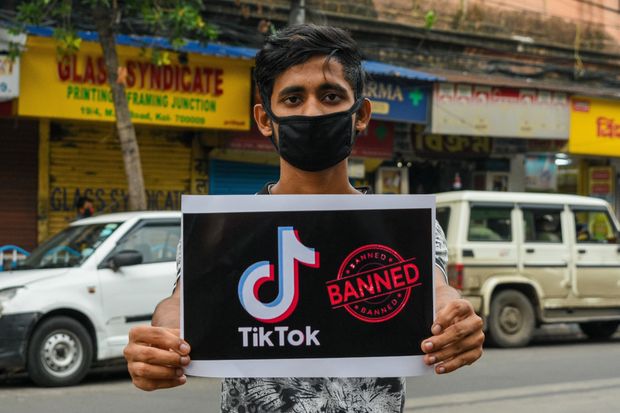
TikTok, Chinese apps banned in India
As Chinese and Indian troops were clashing in the Himalayas on June 16 in a brutal brawl leading to the deaths of 20 Indian soldiers, hundreds of millions of people across India were enjoying or downloading Chinese-based apps like TikTok and WeChat. No longer.
In response to the border clashes, India recently banned the use of dozens of Chinese apps. This piece below from Tech Crunch gives a good overview of how deep Chinese apps had penetrated the Indian market.

As Coronavirus Captures Headlines, South China Sea Tensions Rising
While global headlines focus on the recent clash between Indian and Chinese military forces in a Himalayan border region, China has also flexed its muscles recently in the South China Sea and the Taiwan Strait.
Beginning in mid-April, a Chinese survey ship accompanied by coast guard vessels entered Malaysia’s Exclusive Economic Zone (EEZ) in the South China Sea, near an oil exploration vessel contracted by Petronas, the Malaysian state oil firm, and stayed in the region for approximately a month. The move was seen as threatening, and Malaysia deployed naval vessels to the region. The Chinese ship eventually retreated.
Around the same time, Vietnam protested the establishment of two new administrative units established by the government of China in the South China Sea. Meanwhile, Chinese jets have repeatedly entered Taiwan’s Air Identification Zone in the last week, according to a Reuters report.
As tensions heat up in the South China Sea, it’s worth remembering how vital this waterway is to global trade. To wit:
- Some $5 trillion of world trade passes through the South China Sea, accounting for nearly 1/3 of all global seaborne trade
- There may be some 28 billion barrels of oil in the waters, waiting to be exploited
- Additionally, there is an estimated 190 trillion cubic feet of natural gas
- The sea also contains 10% of the world’s fisheries
Anti Panda has a good piece in the Diplomat today, based on a CSIS survey, of how Southeast Asian elites view the growing competition in the South China Sea.
